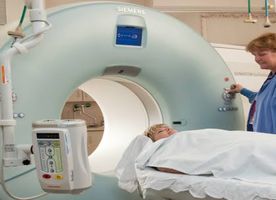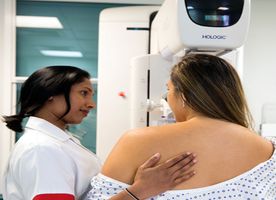Ultrasound Scan in Vietnam
Search and Compare the Best Clinics and Doctors at the Lowest Prices for Ultrasound Scan in Vietnam

What does a Ultrasound Scan Procedure Involve?
There are two main types of ultrasound scans:
External ultrasound scan
During an external ultrasound scan, a trained technician (sonographer) apply a lubricating gel onto your skin over the area being examined.
The sonographer than places a small, hand-held device called a transducer against the area being studied. The transducer may be moved as needed to capture the images. The transduces works by sending sound waves into your body, collecting the ones that echo, and sending them to a computer that creates the images. These images can be interpreted by your doctor. Humans cannot hear the sound waves as they are too high of a pitch for us to hear.
Depending on the area being examined, you may be asked to change positions to let the sonographer get better access. You should not feel any discomfort or pain during the procedure.
Internal ultrasound scan
In some cases, an ultrasound scan may be done inside your body. This type of ultrasound is normally used to evaluate the internal reproductive organs or urinary system. During an external ultrasound scan, the transducer is attached to a probe that is inserted into a natural opening in your body. Here are some examples of internal ultrasound:
-
Transvaginal ultrasound – the sonographer uses a special transducer and gently inserts it into the vagina to get a quick look at the ovaries and uterus.
-
Transrectal ultrasound – a special transducer is placed into the rectum to create images of the prostate.
-
Transesophageal echocardiogram – the sonographer inserts a transducer into your esophagus to obtain heart images. This procedure is usually under local anesthesia and sedative.
When your ultrasound scan is complete, a radiologist will analyze the images and send a report to your doctor. Then, your doctor will share the result with you.
How Long Should I Stay in Vietnam for a Ultrasound Scan Procedure?
You should be able to leave the hospital soon after your ultrasound finishes. Since the images of your scan will need to be analyzed, you may need to stay in Vietnam for at least 3 to 7 days, or until the results are ready. When the results are ready, you will have to attend a follow-up appointment to discuss them with your doctor.
What's the Recovery Time for Ultrasound Scan Procedures in Vietnam?
You can return to your normal activities, including work, immediately after an ultrasound scan. However, if you have an internal ultrasound scan that involves the use of anesthetic and sedative, you should wait about 24 hours until you are allowed to go back to your normal activities.
What sort of Aftercare is Required for Ultrasound Scan Procedures in Vietnam?
There is generally no special aftercare following an ultrasound scan. You can drive, eat, and drink as usual straightaway. If the ultrasound scan involves anesthetic and sedative, you should not drive, operate machinery, or drink alcohol for a day.
What's the Success Rate of Ultrasound Scan Procedures in Vietnam?
The success and accuracy rate of an ultrasound scan depends on what it is used for. It should be 100% accurate in detecting a fetal heartbeat. However, it may not be always accurate for other uses.
Ultrasound scan is very safe and there are no know risks from the sound waves used in the procedure. Unlike some other scans, such as CT scans, ultrasound scans do not involve exposure to radiation.
If you are undergoing an internal scan and are allergic to latex, make sure to let the sonographer know so they can use a latex-free probe cover.
Are there Alternatives to Ultrasound Scan Procedures in Vietnam?
The alternatives to ultrasound scan depend on the reason why you need the procedure. For instance, if you want to confirm your pregnancy, you can simply use a pregnancy test from the drug store or get a blood test. If you want to find out the sex of your unborn baby, you can get also get a blood test. For other uses, you may undergo other imaging tests, such as CT scan, MRI scan, or X-rays.
This information has been accurately sourced and verified by a medical professional for its accuracy, however, we strongly recommend you to consult with your doctor before pursuing medical procedures overseas.




























































































































































































